Visiting Emperor Qinshihuang’s Mausoleum: Essential Tips for Travelers
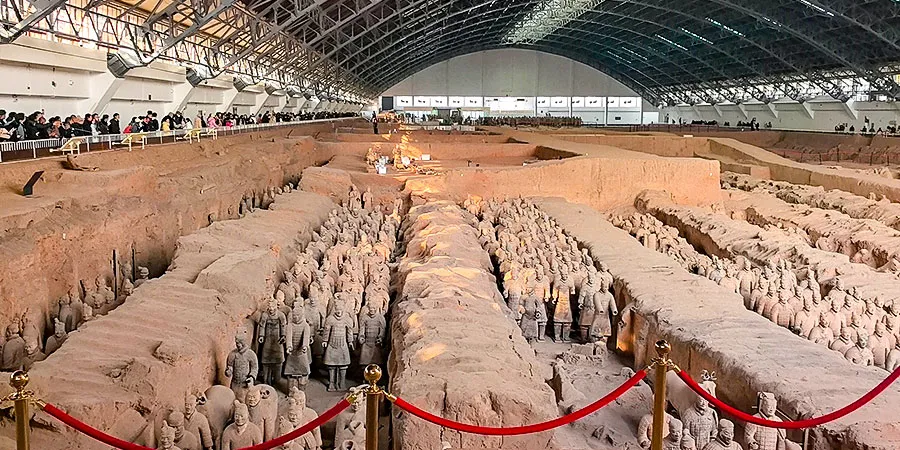
An Essential Guide to Visiting Emperor Qinshihuangs Mausoleum Site Museum
In This Guide
- An Essential Guide to Visiting Emperor Qinshihuangs Mausoleum Site Museum
- The Rich History and Legends of Emperor Qinshihuangs Mausoleum Site Museum
- Main Highlights: What You Absolutely Can’t Miss
- Planning Your Visit: A Practical Guide
- Tickets: Prices, Booking, and Tips
- How to Get There: A Complete Transportation Guide
- Local Cuisine and Accommodation Nearby
- Frequently Asked Questions
- Final Thoughts on Your Trip
Unveiling the Secrets of the First Emperor
Nestled in the heart of Shaanxi province, just outside the historic city of Xi’an, lies one of the most significant archaeological discoveries in history: the Emperor Qinshihuang’s Mausoleum Site Museum. This awe-inspiring complex is home to the world-renowned Terracotta Army, a vast collection of life-sized clay statues that were buried with China’s first emperor, Qin Shi Huang, in 210-209 BCE. These ancient warriors, along with their intricate bronze chariots and horses, stand as a testament to the emperor’s quest for immortality and his desire to maintain control over his empire in the afterlife.
Visiting this UNESCO World Heritage site is not merely a journey into the past; it is an exploration of the rich tapestry of Chinese history, art, and culture. The museum offers a unique opportunity to witness firsthand the remarkable craftsmanship of ancient artisans and to understand the monumental scale of the emperor’s burial project, which involved thousands of workers over several decades.
As you step into the museum grounds, prepare to be captivated by stories of ambition, power, and an era that laid the foundations for modern China. This essential guide will help you navigate the museum’s highlights, practical tips for your visit, and essential insights to enhance your experience. Whether you are a history buff or simply a curious traveler, the Emperor Qinshihuang’s Mausoleum Site Museum promises an unforgettable encounter with one of the world’s greatest civilizations.
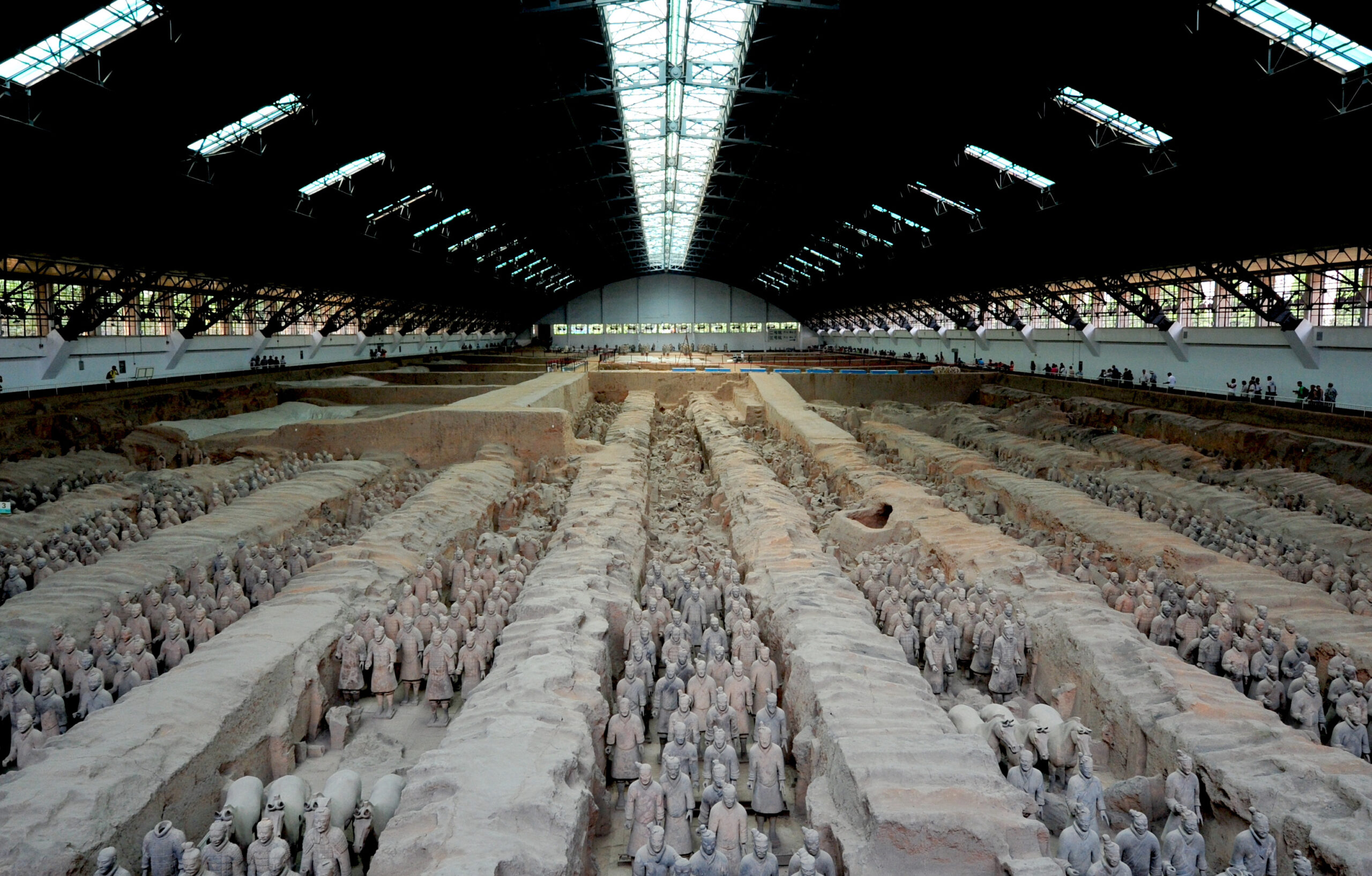
Emperor_Qinshihuangs_Mausoleum_Site_Museum.
The Rich History and Legends of Emperor Qinshihuangs Mausoleum Site Museum
A Journey Through Time: The Legacy of Emperor Qinshihuang
Nestled in the heart of Shaanxi Province, the Emperor Qinshihuang’s Mausoleum Site Museum is not just a tribute to China’s first emperor but also a gateway to the rich tapestry of Chinese history and legends. This monumental site, famous primarily for the Terracotta Army, offers visitors a deep dive into the life and legacy of Qinshihuang, a ruler whose vision reshaped the landscape of ancient China.
The Historical Context
Qinshihuang, known as the First Emperor, ascended to the throne in 246 BCE, unifying the warring states of China in 221 BCE. His reign marked the beginning of the Qin Dynasty, a period characterized by significant reforms and monumental projects, including the standardization of weights, measures, and even the writing system. However, it is his grand mausoleum, constructed to accompany him into the afterlife, that leaves an indelible mark on history.
The mausoleum complex spans over 56 square kilometers and is believed to contain not only the Terracotta Army but also a wealth of treasures and artifacts, symbolizing the emperor’s power and the grandeur of his reign. The site was discovered in 1974 by local farmers and has since been recognized as a UNESCO World Heritage Site, drawing millions of visitors eager to glimpse the marvels of ancient China.

Emperor_Qinshihuangs_Mausoleum_Site_Museum.
The Terracotta Army: A Guardian Legacy
The most iconic feature of the mausoleum is undoubtedly the Terracotta Army. Comprising over 8,000 life-sized figures, including soldiers, horses, and chariots, each piece is meticulously crafted with unique facial features, clothing, and expressions. This army was built to protect Qinshihuang in the afterlife, showcasing the emperor’s belief in the continuity of life beyond death.
Legend has it that when the army was first unearthed, the faces of the terracotta warriors bore an uncanny resemblance to the citizens of Xi’an, leading to speculations that local artisans modeled the figures after real people. This myth not only enhances the mystique surrounding the army but also connects it to the living history of the region.

Emperor_Qinshihuangs_Mausoleum_Site_Museum.
Architectural Marvels
Beyond the warriors, the mausoleum itself is an architectural wonder. The main burial mound, which still remains largely unexcavated, is said to be surrounded by a vast array of treasures, including rare metals and precious gems. Ancient texts describe how the tomb was designed to mirror the layout of the emperor’s palace and even included rivers of mercury to simulate flowing water. While many of these claims remain unverified, they speak to the grandeur and ambition of Qinshihuang’s vision for his eternal resting place.
Legends and Myths
The tales surrounding the mausoleum are as captivating as the artifacts themselves. One popular legend recounts how the emperor sought immortality and commissioned the creation of the army as part of his quest. He believed that these warriors would not only protect him in death but would also serve him in the afterlife, ensuring that he remained a powerful figure beyond the grave.
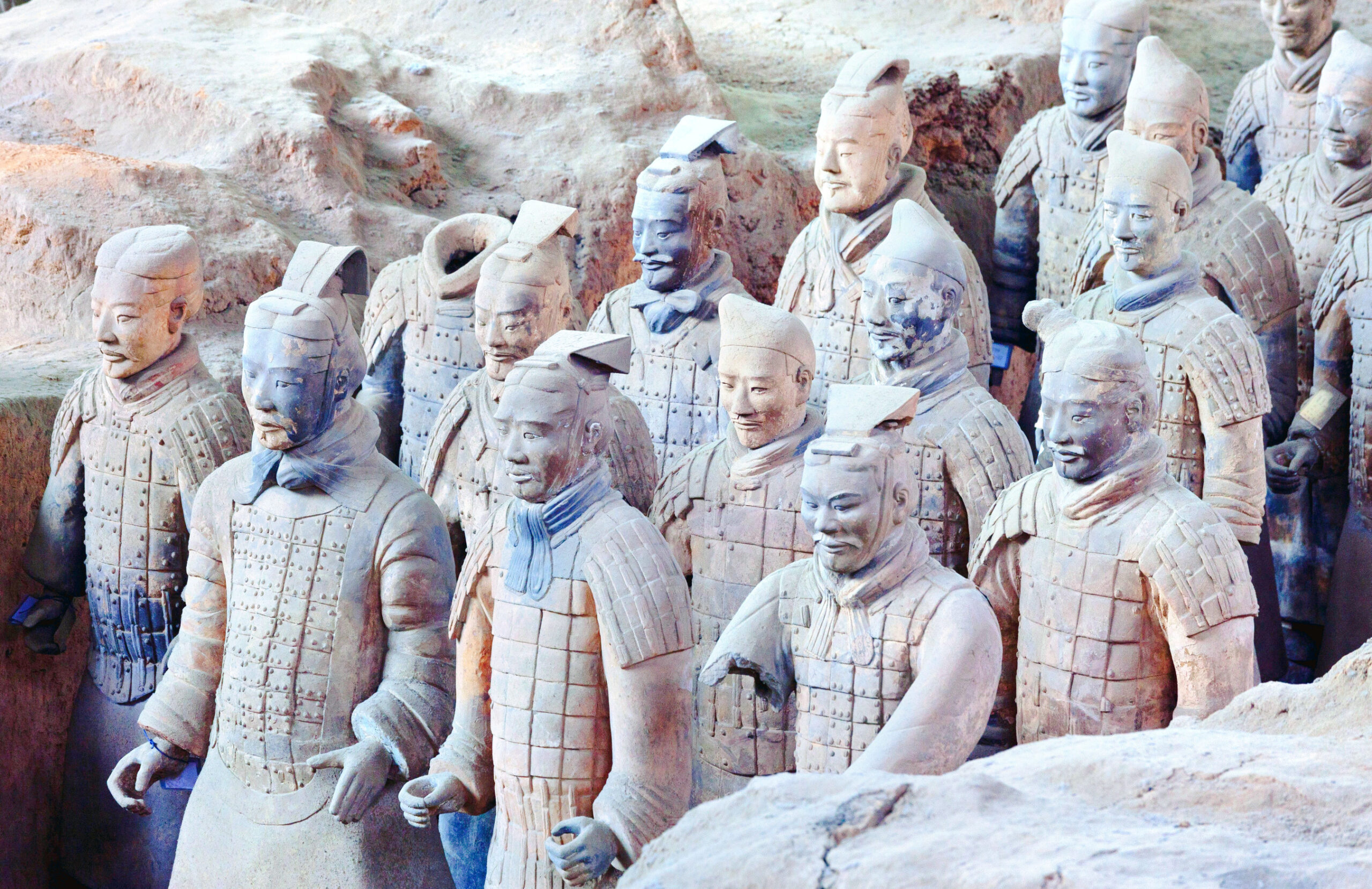
Emperor_Qinshihuangs_Mausoleum_Site_Museum.
Additionally, there are stories of a secret underground palace, complete with elaborate traps and mechanisms to deter grave robbers. While no such palace has been definitively discovered, the idea of hidden treasures and elaborate defenses continues to tantalize historians and treasure hunters alike.
Visiting the Mausoleum: A Cultural Encounter
For international travelers, visiting the Emperor Qinshihuang’s Mausoleum Site Museum is not just about witnessing ancient artifacts; it’s about engaging with the stories and legends that define Chinese civilization. As you wander through the expansive museum grounds, consider the weight of history that lies beneath your feet and the incredible legacy of a ruler who dared to unify a nation.
To enrich your experience, it’s advisable to arrive early to avoid the crowds, allowing you to truly appreciate the scale and artistry of the Terracotta Army. Guided tours provide valuable insights, but be cautious of unofficial guides; purchasing tickets directly from the museum ensures a smoother visit.
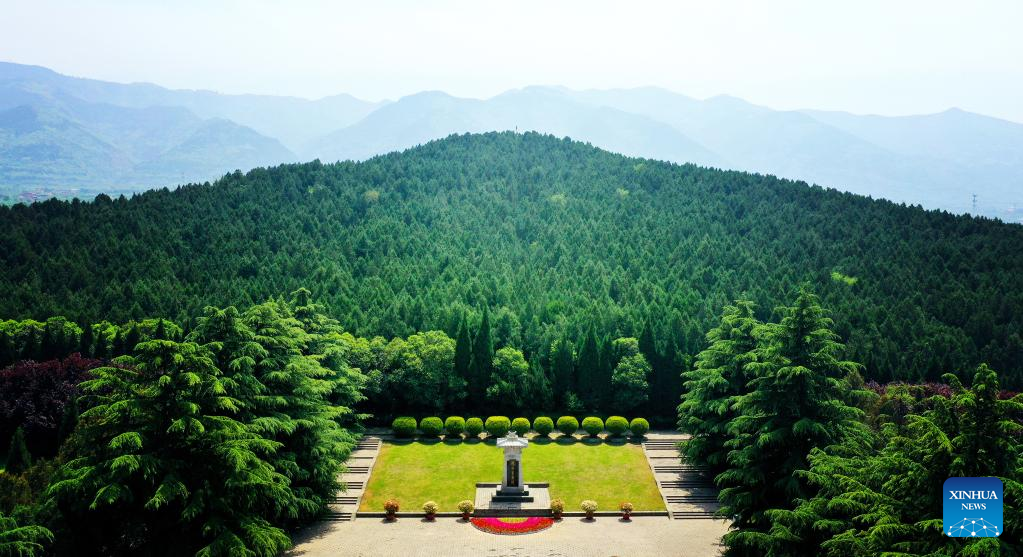
Emperor_Qinshihuangs_Mausoleum_Site_Museum.
Conclusion
The Emperor Qinshihuang’s Mausoleum Site Museum is much more than a collection of ancient artifacts; it is a testament to a pivotal moment in history and a reflection of the legends that continue to inspire awe. As you explore this remarkable site, you become part of a narrative that stretches back over two millennia, engaging with the echoes of a past that shaped the very foundations of China.
Main Highlights: What You Absolutely Can’t Miss
Explore the Wonders of Emperor Qinshihuang’s Mausoleum Site Museum
Visiting the Emperor Qinshihuang’s Mausoleum Site Museum is a journey back in time, where the grandeur of ancient China unfolds before your eyes. Here are the main highlights that you absolutely can’t miss during your visit:
1. The Terracotta Army
At the heart of the museum lies the world-renowned Terracotta Army, an extraordinary collection of life-sized clay soldiers, horses, and chariots buried with Emperor Qin to guard him in the afterlife.
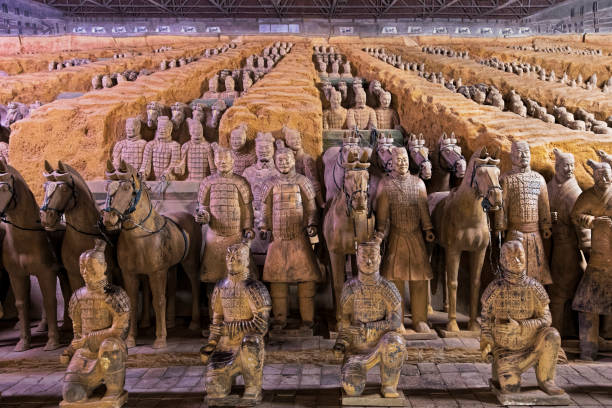
Emperor_Qinshihuangs_Mausoleum_Site_Museum.
- Pit 1 is the largest and most impressive, housing thousands of warriors in battle formation. The sheer scale and detail of each figure, including distinct facial features and expressions, are awe-inspiring.
- Don’t forget to explore Pit 2 and Pit 3, which contain a mix of cavalry, infantry, and officials, showcasing the strategic military formations of the time.
2. The Bronze Chariots and Horses
A must-see is the Bronze Chariots and Horses, which have been relocated to the site for enhanced viewing. These intricate artifacts depict the emperor’s royal chariots, intricately designed and symbolizing his power and status.

Emperor_Qinshihuangs_Mausoleum_Site_Museum.
- Tip: A short bus ride included in your ticket will take you to the area where these treasures are displayed. Consider using the golf cart service for a leisurely ride, as the walk can be a bit lengthy.
3. The Mausoleum Mound
The Mausoleum Mound itself is an impressive sight. While the tomb remains unexcavated, the burial mound is a symbol of Qin’s ambition and the mysteries that lie beneath. It is said to be filled with treasures and intricate designs, mirroring the opulence of the emperor’s reign.
4. The Exhibition Halls
Don’t miss the Exhibition Halls, where you can find various artifacts, including weaponry, pottery, and other relics from the Qin dynasty. These exhibitions provide deeper insights into the life, culture, and technological advancements of ancient China.
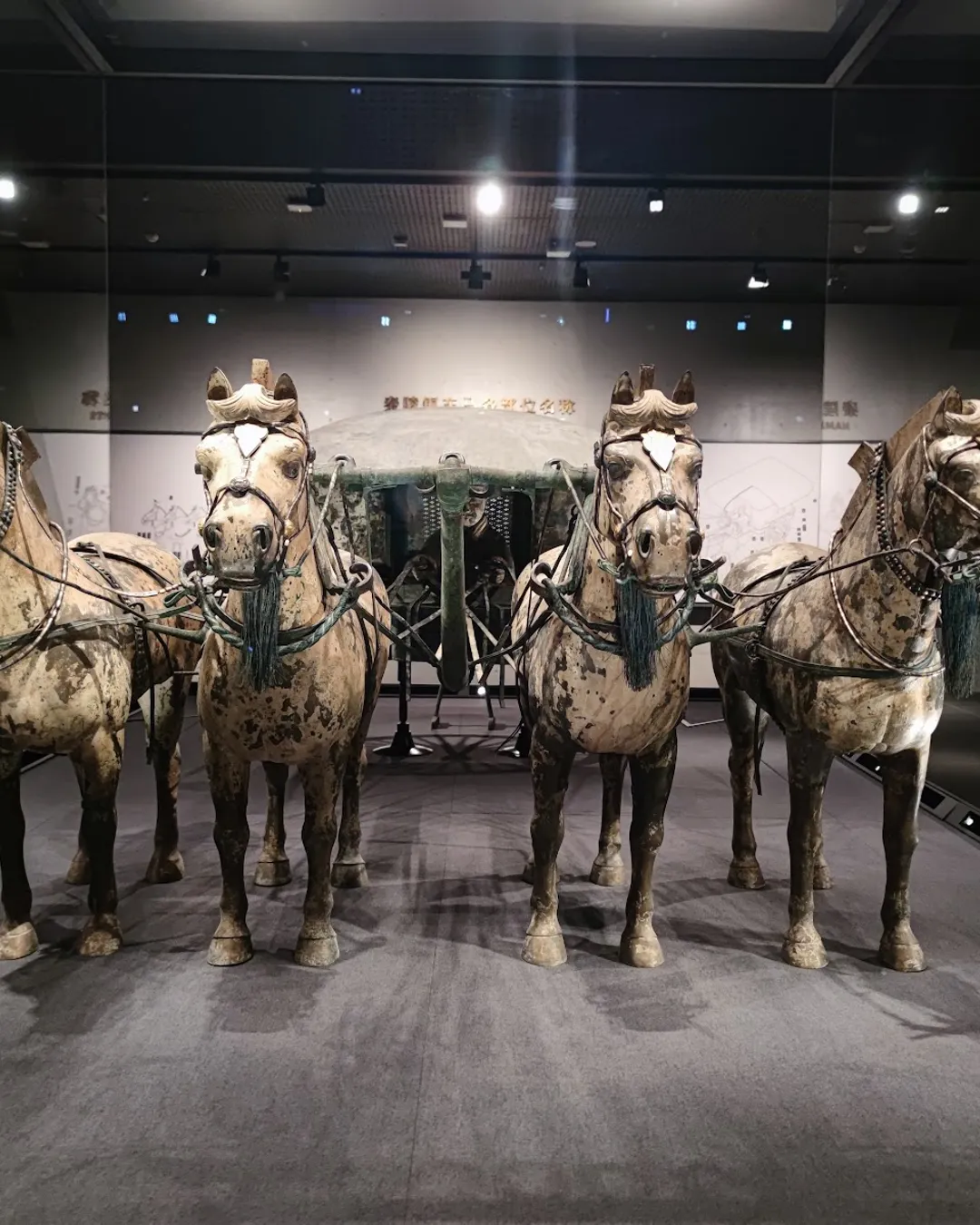
Emperor_Qinshihuangs_Mausoleum_Site_Museum.
5. Visit Early for a Better Experience
To fully appreciate the grandeur of the museum without the overwhelming crowds, arrive early! Many tourists tend to visit later in the morning, so getting there right when the museum opens can provide a more intimate experience with the exhibits.
6. Practical Tips
- Tickets: Purchase your tickets at the official counter to avoid scams from unauthorized guides.
- Restrooms: Facilities are available throughout the complex, but they are mostly the squatty-potty style. Be sure to carry your own toilet paper.
- Guided Tours: Consider joining a reputable guided tour for enriched context and history, ensuring you get the most out of your visit.
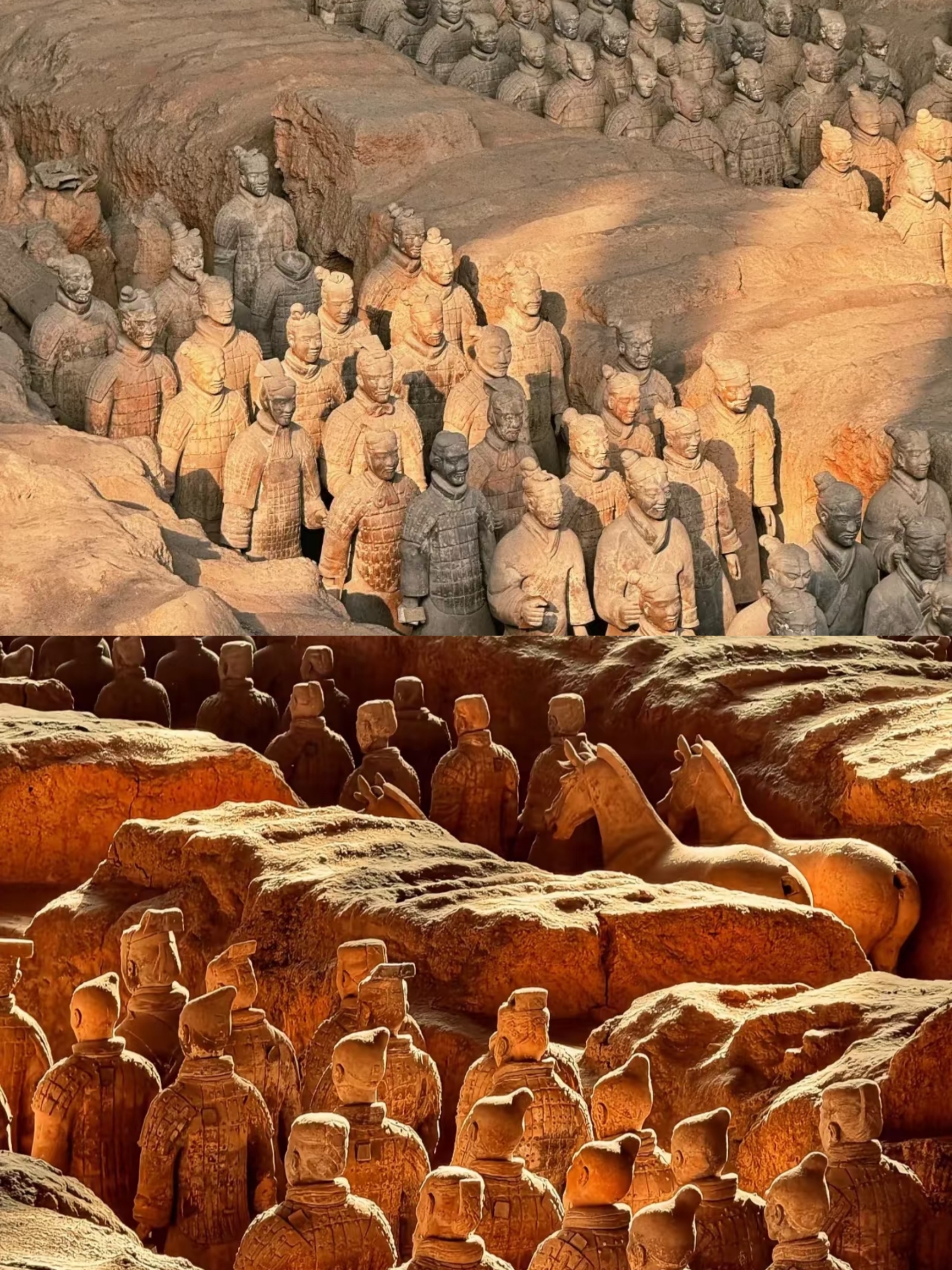
Emperor_Qinshihuangs_Mausoleum_Site_Museum.
7. Nearby Attractions
While in Xi’an, explore other historical landmarks such as the Xi’an City Wall, Muslim Quarter, and the Big Wild Goose Pagoda. These sites complement the historical narrative of the Qin dynasty and provide a fuller picture of China’s rich heritage.
Conclusion
The Emperor Qinshihuang’s Mausoleum Site Museum is not just a historical site; it is a testament to the ingenuity and ambition of ancient China. From the mesmerizing Terracotta Army to the mysterious burial mound, each highlight beckons travelers to delve deeper into the past. Prepare for an unforgettable journey through time as you explore one of the most significant archaeological finds in history!
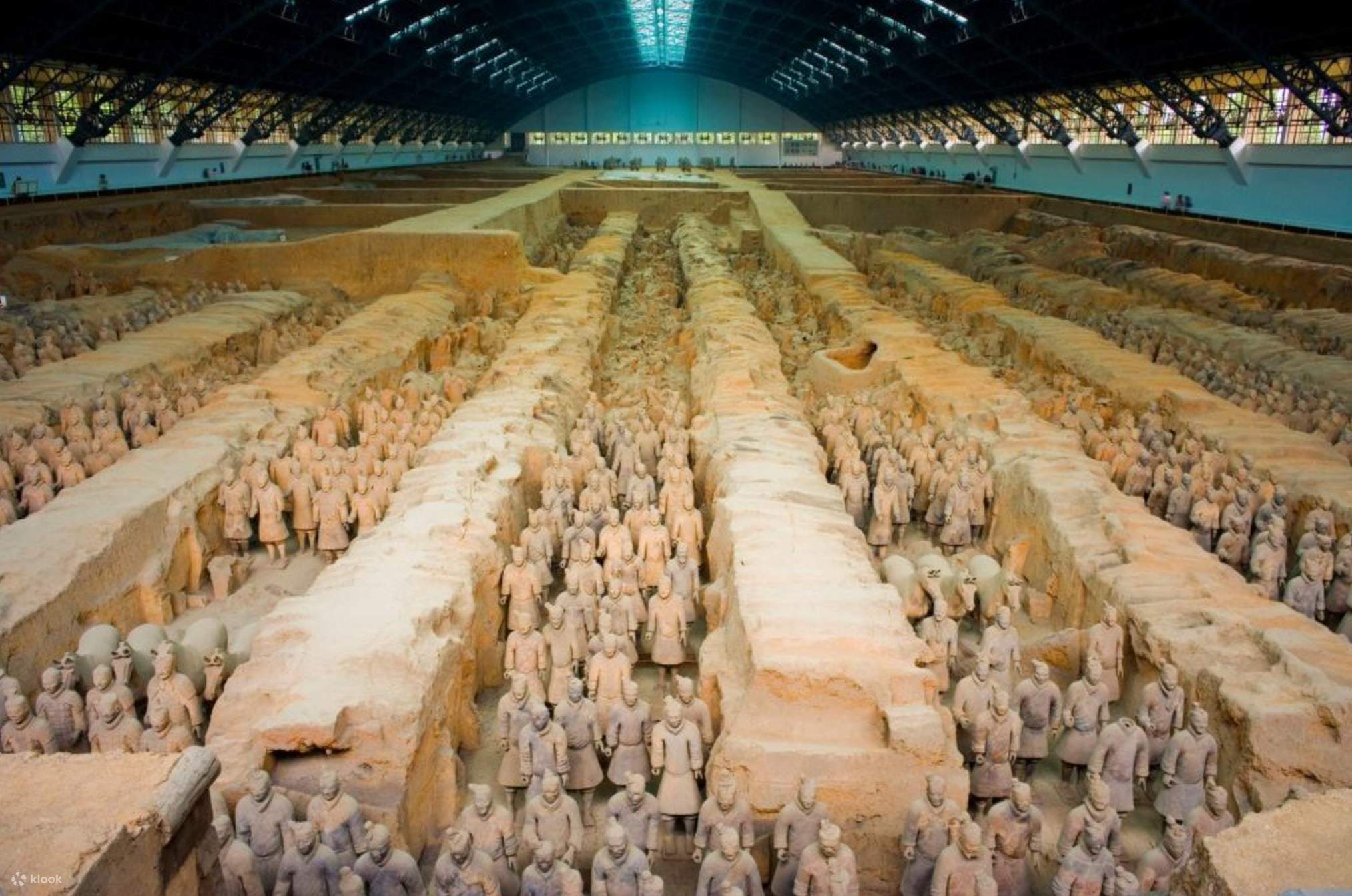
Emperor_Qinshihuangs_Mausoleum_Site_Museum.
Planning Your Visit: A Practical Guide
Essential Information for Your Visit to Emperor Qinshihuang’s Mausoleum Site Museum
Visiting the Emperor Qinshihuang’s Mausoleum Site Museum, home to the awe-inspiring Terracotta Army, is a journey through time that offers a glimpse into China’s rich history and the remarkable legacy of its first emperor. Here’s a practical guide to help you make the most of your visit.
Getting There
Location: The museum is located approximately 40 kilometers (25 miles) east of Xi’an, in Shaanxi Province.
Transportation:
– Public Transport: Buses run regularly from Xi’an to the museum. Look for bus No. 5 or 306 at the Xi’an Railway Station or Beichitou.
– Taxi: A taxi ride from downtown Xi’an will take around 40 minutes, costing approximately 100-150 RMB (about $15-$23).
– Guided Tours: Many local travel agencies offer guided tours that include transportation.
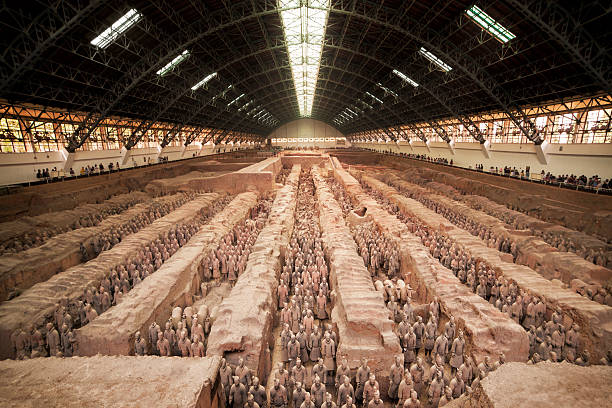
Emperor_Qinshihuangs_Mausoleum_Site_Museum.
Opening Hours
- Daily: 8:30 AM – 5:30 PM (last entry at 5 PM).
- Best Time to Visit: Arrive early, ideally around 8:00 AM. The site can get crowded, especially after 10 AM, so an early start allows you to enjoy the complex with fewer visitors.
Tickets and Entry
- Ticket Purchase: Buy your tickets directly from the official ticket counter at the museum entrance to avoid scams. Prices are usually around 150 RMB (approximately $23) for adults.
- Included in Ticket: The ticket includes access to the main exhibition halls, the Terracotta Army pits, and the bronze chariots and horses, which have recently been relocated to the site.
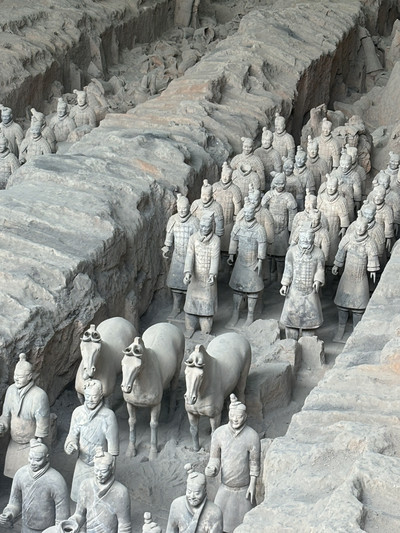
Emperor_Qinshihuangs_Mausoleum_Site_Museum.
What to Expect
- Terracotta Army:
- The main attraction consists of three pits filled with thousands of life-sized terracotta warriors, each unique in appearance.
-
Pit 1 is the largest and most impressive; it is advisable to spend ample time here.
-
Bronze Chariots and Horses:
-
After exploring the Terracotta Army, take a complimentary shuttle bus to see the bronze chariots and horses, which are well worth the trip.
-
Facilities:
- Restrooms: Available throughout the complex, primarily squat toilets. Bring your own toilet paper, as it is not always provided.
- Food and Drink: There are limited dining options within the museum. Consider packing snacks and water to keep your energy up during your exploration.
Tips for a Smooth Visit
- Avoid Scams: Be cautious of individuals posing as tour guides outside the museum. Stick to official guides and reputable tour companies.
- Dress Comfortably: Wear comfortable shoes, as you’ll be walking a lot. The terrain can be uneven, especially near the pits.
- Bring a Camera: Photography is allowed in most areas, but be respectful of the cultural significance of the site.
- Plan for Time: Allocate at least 3-4 hours to fully appreciate the museum and its exhibits.
Nearby Attractions
Once you’ve finished at the mausoleum, consider exploring these nearby sites:
- Xi’an City Wall: A short drive away, this ancient fortification offers picturesque views of Xi’an.
- Muslim Quarter: Known for its vibrant street food scene and historical significance, it’s a perfect place to sample local delicacies.
- Shaanxi History Museum: A treasure trove of artifacts that provide deeper insights into the region’s history.
Conclusion
A visit to the Emperor Qinshihuang’s Mausoleum Site Museum is not just an exploration of ancient history; it’s an opportunity to connect with the cultural heart of China. Plan your visit wisely, and you’ll leave with unforgettable memories of this UNESCO World Heritage site.
Tickets: Prices, Booking, and Tips
Visiting the Emperor Qinshihuang’s Mausoleum Site Museum is an unforgettable journey into ancient Chinese history. To ensure your experience is smooth and enjoyable, here’s everything you need to know about tickets, prices, and booking tips.
Ticket Prices
As of 2023, the ticket prices for the museum are as follows:
- General Admission: Approximately CNY 150 (~$22 USD)
- Discounted Tickets: Available for students and seniors, typically around CNY 75 (~$11 USD). Be sure to bring valid identification.
Booking Your Tickets
-
Online Reservations: To avoid long queues, it is advisable to book your tickets online through the official website or trusted travel platforms. This option also allows you to check for any special promotions or packages.
-
On-Site Purchase: If you prefer to purchase tickets on the day of your visit, you can do so at the ticket counters located at the museum entrance. However, arriving early is recommended to beat the rush, especially during peak tourist seasons.
-
Tour Packages: Many travelers opt for guided tours that include entry to the mausoleum site, transportation, and a knowledgeable guide. These tours often range from CNY 200 to CNY 500 (~$30 to $75 USD), depending on the inclusions.
Tips for a Smooth Visit
-
Go Early: Arriving at the museum before it opens will give you a significant advantage. Many travelers recommend arriving around 8:30 AM. The site tends to get crowded by 10 AM, making it difficult to navigate through the exhibits comfortably.
-
Beware of Scams: Be cautious of individuals posing as tour guides outside the museum. Only trust guides who are officially affiliated with recognized tour companies. When purchasing tickets, always buy directly from the official counters to avoid scams.
-
Transportation and Accessibility: Your ticket includes access to shuttle buses that transport visitors around the site. Consider paying a small extra fee for a golf cart if you wish to avoid the walk to the excavation pits, as the area is expansive.
-
Facilities: There are restroom facilities available throughout the complex, but be prepared to encounter squat toilets and to bring your own toilet paper, as it may not be provided.
-
Plan for Time: The site is vast, and each pit tells a different story of the Terracotta Warriors. Allocate at least 3 hours for your visit to fully appreciate the exhibits and historical significance.
Conclusion
A visit to the Emperor Qinshihuang’s Mausoleum Site Museum is a must for any traveler eager to explore China’s rich history. By understanding ticket prices, booking wisely, and following these practical tips, you’re well on your way to having a memorable and enriching experience. So pack your bags and prepare to step back in time!
How to Get There: A Complete Transportation Guide
Navigating Your Way to Emperor Qinshihuang’s Mausoleum Site Museum
Visiting the Emperor Qinshihuang’s Mausoleum Site Museum is a journey back in time to the era of China’s first emperor and the captivating Terracotta Warriors. Located just outside Xi’an, getting there is straightforward, whether you prefer public transport, a guided tour, or a private vehicle. Here’s your comprehensive guide to arriving at this magnificent historical site.
1. By Public Transport
Bus Services:
– From Xi’an City Center: Take Bus 914 from the Xi’an Railway Station or the City Wall area. This bus will take you directly to the Terracotta Warriors site. The journey lasts approximately 1 hour and is economical. Make sure to check the latest schedules, as they can change.
– Cost: A one-way ticket typically costs around 7 RMB (approximately $1).
Tips:
– Early Departure: To avoid crowds, consider catching the bus early in the morning. Visitors generally start arriving around 10 AM, so an early start will enhance your experience.
2. By Taxi or Rideshare
Taxi Services:
– Taxis are readily available throughout Xi’an. Simply hail one from the street or use an app like Didi Chuxing (China’s Uber equivalent).
– Estimated Fare: From the city center to the museum, expect to pay around 150-200 RMB ($22-$30), depending on traffic.
Rideshare:
– Rideshare services provide a convenient option and can be booked via mobile apps. This might be more comfortable, especially if you are traveling in a group.
3. Guided Tours
If you prefer a more structured visit, consider booking a guided tour. Many companies offer packages that include transportation, a knowledgeable guide, and sometimes even meals. Here are a few options:
– Xi’an Terracotta Warriors and Horses Highlight Tour: This full-day tour includes transportation, entrance fees, and a guided experience.
– Private Day Tours: Tailor your experience to your interests, whether you want to explore the Terracotta Army, visit nearby attractions, or enjoy local cuisine.
4. By Private Vehicle
For those who prefer the flexibility of their own schedule, renting a car is a viable option. Here’s what you need to know:
– Car Rentals: Available at Xi’an Xianyang International Airport and various rental services in the city center. Ensure you have an international driving permit and are comfortable with local driving conditions.
– Parking: The museum has parking facilities, but it’s wise to arrive early, especially during peak tourist seasons.
5. On-site Transportation
Once you arrive at the museum, you have a few options to navigate the expansive grounds:
– Golf Carts: For a small fee, you can take a golf cart to the various pits and exhibits, saving you the walk, especially if you plan to explore multiple sites.
– Walking: If you enjoy walking, the museum is pedestrian-friendly, and you can soak in the atmosphere as you stroll between exhibits.
Final Tips
- Stay Hydrated: Bring water, especially during the summer months, as you may spend considerable time outdoors.
- Restrooms: Facilities are available throughout the complex, but note that they may be squat-style and often lack toilet paper. Bring your own tissue or wipes for convenience.
- Be Wary of Scams: Always purchase tickets at the official counter and verify that your tour guide is affiliated with a reputable company to avoid scams.
Whether you’re marveling at the Terracotta Warriors or exploring the burial mound of Emperor Qin, your journey to the Emperor Qinshihuang’s Mausoleum Site Museum promises to be a memorable part of your exploration of China’s rich history.
Local Cuisine and Accommodation Nearby
Exploring the majestic Emperor Qinshihuang’s Mausoleum Site Museum is sure to be a highlight of your journey through Xi’an. To enhance your experience, here are some local culinary delights and comfortable accommodations that will resonate with the rich tapestry of Chinese history and culture.
Local Cuisine
When visiting this historical site, indulging in the local flavors of Xi’an is a must. The city is renowned for its unique dishes that reflect its cultural heritage. Here are some top recommendations:
-
Biang Biang Noodles
A Xi’an specialty, these wide, hand-pulled noodles are served with a spicy sauce and topped with various ingredients like vegetables and meat. You can enjoy this dish at Biang Biang Mian Noodles, where the authenticity and flavor will leave you craving more. -
Yangrou Paomo (Lamb and Bread Soup)
This hearty dish consists of shredded flatbread soaked in a rich lamb broth, often garnished with fresh herbs and spices. Head over to Lao Xi’an Hanji Sanxian Zhumo Restaurant for an authentic taste. -
Shaanxi-style Hotpot
Experience a communal dining tradition with a twist at Chongqing XiaoZhen Shi Shang Hotpot. Choose from a variety of fresh ingredients to cook in a bubbling pot of spicy broth, perfect for warming up after a day of exploration. -
Street Food at Beiyuanmen Night Market
A short distance from the museum, this vibrant market offers a myriad of street food options, from spicy skewers to sweet dumplings. Immerse yourself in the local atmosphere and try as many dishes as your appetite allows!
Accommodation Nearby
After a day filled with history and culinary delights, retreat to one of the nearby accommodations that combine comfort with a touch of local charm:
-
Grand Park Xi’an
Located conveniently close to the museum, this hotel offers modern amenities, luxurious rooms, and stunning views of the ancient city. It’s an excellent base for your Xi’an adventures. -
Sofitel Legend People’s Grand Hotel Xi’an
A blend of luxury and heritage, this hotel features beautifully designed rooms that reflect the city’s historical essence. With fine dining options and a spa, you can unwind and recharge after your explorations. -
The Westin Xian
Just a short drive from the mausoleum, The Westin offers a serene environment with spacious rooms and a beautiful garden. Their on-site restaurants serve a mix of international and local cuisine, ensuring you have plenty to choose from.
Tips for Your Visit
- Timing is Key: Arrive early at the mausoleum to avoid large crowds and fully immerse yourself in the experience.
- Stay Hydrated: Carry water with you, especially during warmer months, as you’ll want to stay refreshed while exploring.
- Engage with Local Culture: Don’t hesitate to chat with locals in restaurants or markets, as they often have fascinating stories and recommendations to share.
By savoring the local cuisine and selecting comfortable accommodations, you’ll enrich your visit to the Emperor Qinshihuang’s Mausoleum Site Museum, making your journey through Xi’an both memorable and delicious.
Frequently Asked Questions
Frequently Asked Questions
1. What are the opening hours of the Emperor Qinshihuang’s Mausoleum Site Museum?
The museum generally opens from 8:30 AM to 5:30 PM daily, with the last entry at 5 PM. However, it’s advisable to check their official website for any seasonal changes or special events that might affect these hours.
2. How can I get to the Mausoleum Site Museum from Xi’an city center?
The site is approximately 40 kilometers east of Xi’an. You can take a taxi or use public transportation, such as the bus service that connects the museum to the city. Additionally, many local tour operators offer shuttle services as part of their packages.
3. What is included in the admission ticket?
The admission ticket typically includes access to the main exhibition area, the excavation pits, and the famous bronze chariots and horses. Note that transportation to the chariot site is often included in the ticket price, but confirm this at the time of purchase.
4. Are there guided tours available?
Yes, guided tours are available and can greatly enhance your experience by providing historical context and insights. It’s best to book these in advance, especially during peak tourist seasons. Be cautious of unofficial guides, and make sure to choose those associated with reputable tour companies.
5. Is it necessary to book tickets in advance?
While it is not strictly necessary, booking tickets in advance is highly recommended, especially during peak travel seasons. This will save you time and help avoid potential long lines at the ticket counter.
6. What should I wear when visiting the museum?
Comfortable walking shoes are a must, as the site involves a fair amount of walking, particularly between the different pits. Dress in layers, as temperatures can vary throughout the day. Additionally, consider sun protection if you plan to be outdoors for extended periods.
7. Are there facilities available on-site?
Yes, the museum complex is equipped with various facilities, including restrooms (squat-style), seating areas, and food stalls. However, it is advisable to bring your own toilet paper, as it may not always be available.
8. What is the best time to visit the museum?
To avoid the crowds, it’s best to arrive early in the morning, ideally around 8:30 AM. Unlike many attractions that draw early morning visitors, the Mausoleum site tends to see fewer crowds until later in the morning. Visiting during weekdays can also help you enjoy a more serene experience.
Final Thoughts on Your Trip
A Journey Through Time: Final Reflections on Your Visit
As you conclude your exploration of the Emperor Qinshihuang’s Mausoleum Site Museum, take a moment to reflect on the extraordinary journey through China’s ancient past that you’ve just experienced. This monumental site, home to the famed Terracotta Army, offers a glimpse into the grandeur of the Qin Dynasty and the monumental efforts of Emperor Qinshihuang to secure his legacy.
Embrace the Experience:
– Unique Artistry: Marvel at the intricacies of the terracotta warriors, each one a testament to the artistic skill and cultural significance of the time. Their unique features and expressions tell stories of a bygone era, revealing the depth of craftsmanship and dedication that went into their creation.
– Historical Significance: Understand that this site is not just a collection of artifacts; it is a doorway to history, allowing you to witness the ambitions of a ruler who sought to unify and protect his empire even in death. The scale of the mausoleum and its accompanying artifacts signifies the profound beliefs surrounding mortality and the afterlife in ancient China.
Practical Tips for Future Travelers:
– Plan Your Visit Wisely: Arriving early ensures you can enjoy the site before it becomes crowded, giving you the opportunity to immerse yourself fully in the experience. Consider taking the bus to the burial mound to make the most of your time and avoid unnecessary walking.
– Beware of Scams: As with any popular tourist destination, remain vigilant about potential scams. Purchase tickets directly from official counters and engage with authorized guides to enhance your understanding of the site.
Culinary Delights and Cultural Exploration:
After your visit, don’t miss the opportunity to indulge in Xi’an’s diverse culinary scene. Explore the nearby Muslim Quarter for authentic street food, or savor local dishes like Biang Biang noodles. Each meal is a continuation of the cultural tapestry you’ve begun to unravel at the mausoleum.
In closing, your visit to the Emperor Qinshihuang’s Mausoleum Site Museum is more than just a sightseeing trip; it is an invitation to connect with